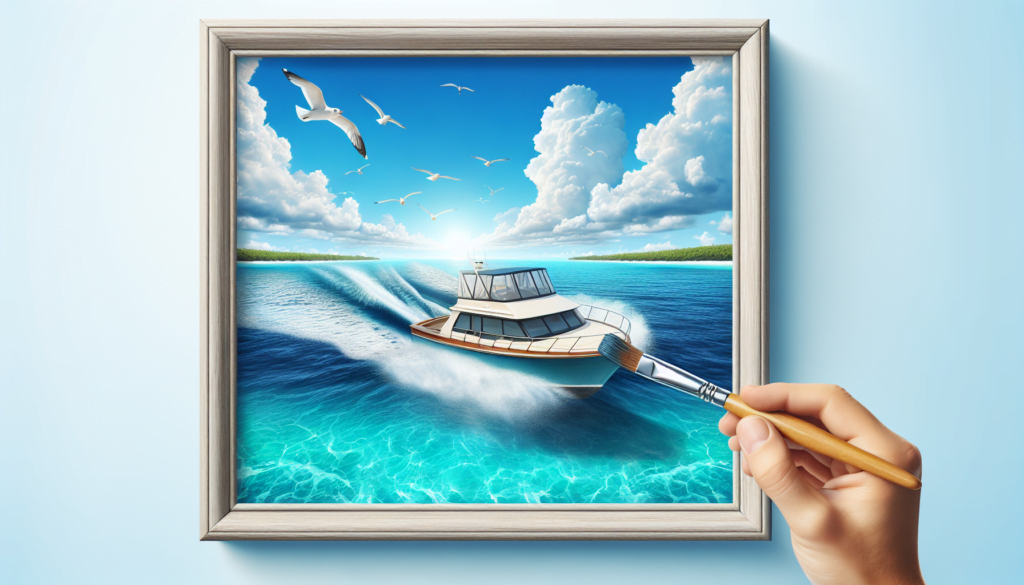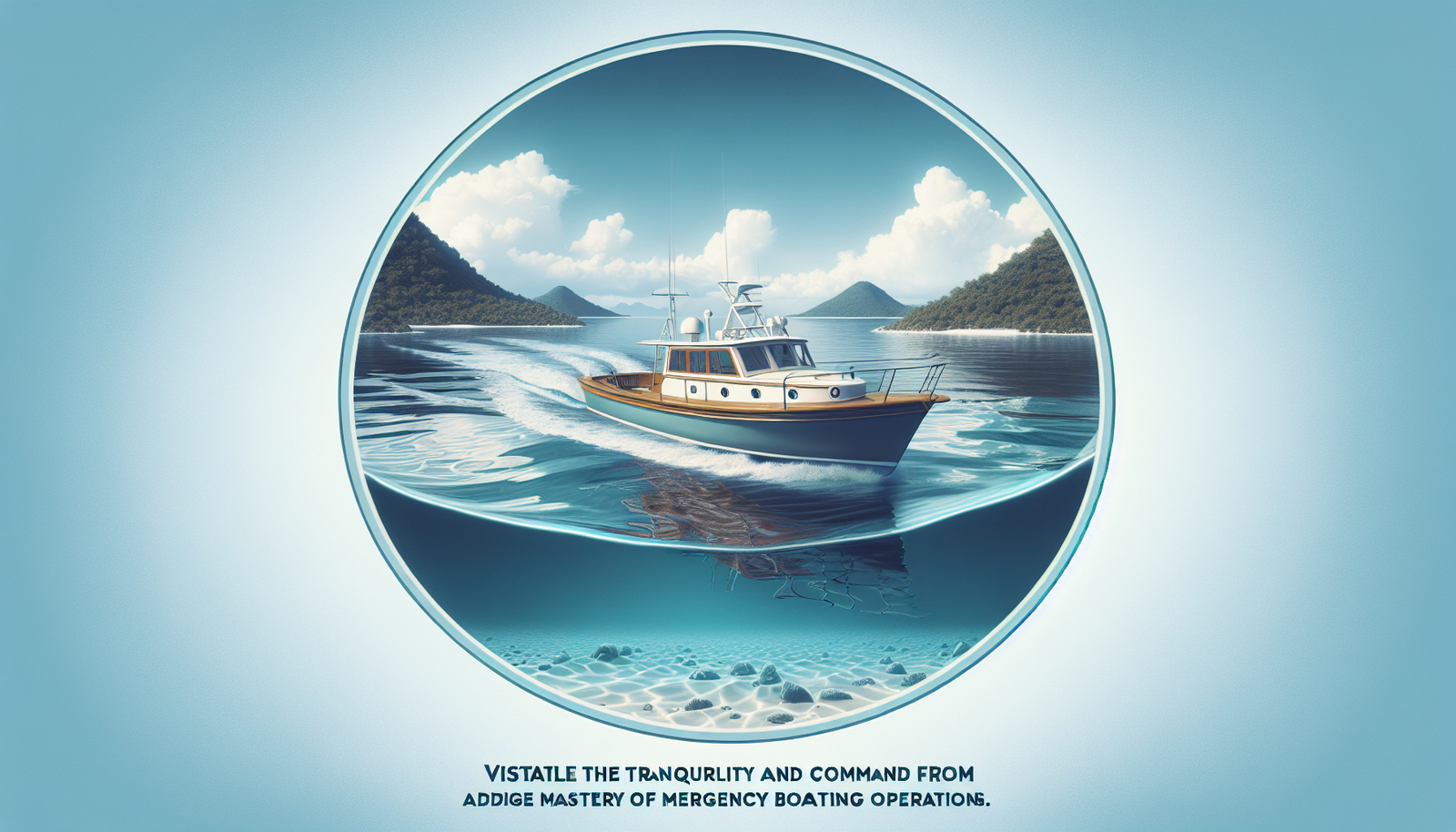As you glide effortlessly over the glittering water, the scent of the salty sea whispers of adventure and freedom. But the tranquility of the ocean’s vast expanse can occasionally be disrupted by unforeseen challenges. “Best Ways To Handle Boating Emergencies” takes your hand and guides you expertly through the myriad of potential boating pitfalls. Each page is a lifeboat of knowledge, packed with practical tips and precautionary measures to keep you safe on your nautical journeys. From astonishingly mild hiccups to potentially threatening situations, the secret to a successful voyage lies in your preparedness for the unexpected squalls that might blow your way. Prepare to cast off with confidence as we navigate through the ‘Best Ways to Handle Boating Emergencies”.

Understanding Basic Boating Safety
Safety should always be the top priority when embarking on a boating trip or any maritime journey. Having a comprehensive understanding, along with adherence to the basic principles of boat safety, ensures a wonderful marine experience, providing efficient responses to emergencies, and most importantly, preserving lives.
Knowing Your Boat
Your journey towards boat-safety starts with your intimate knowledge of your boat. Every vessel has its own unique design, structure, and functionality. Understand the operational basics of your boat – right from how to start and stop it, to how to conduct basic repairs. The boat manual should be your go-to reference. The more familiar you become with your boat, the better equipped you’ll be in the face of adversity.
Wearing Suitable Life Jackets
Personal flotation devices (PFDs), more commonly known as life jackets, are crucial to boating safety. Ensure you and your crew always wear them when onboard. Choose life jackets that fit well and meet the standards of your local maritime safety authority. Remember, the best life jacket is the one you actually wear!
Abiding By Weather Alerts
It’s crucial to stay abreast with both the immediate and forecasted weather conditions. Weather apps, radio broadcasts, and personal observation all play a part in this. During your voyage, maintain frequent checks for any drastic changes in wind speed, temperature, or cloud formation. Don’t let a surprise storm catch you off guard.
Understanding Navigation Rules
Navigating the waterways is like driving on the road. It comes with its own set of rules, signs, and etiquette. Misreading these signals or failing to communicate your intentions properly can lead to accidents. Apart from studying the local navigation regulations, sign up for a boating safety course. They offer valuable insights and training on how to interpret and respond to various marine signals and situations.
Requiring Aboard a Boat Emergency Kit
An emergency kit is a fundamental component of your boat’s safety gear. It equips you with essential supplies needed for survival during emergencies or unexpected situations onboard.
Understanding Its Importance
A well-stocked boat emergency kit prepares you for a wide range of situations – from minor injuries to life-threatening emergencies. It’s not just a box of bandages and medication; it ensures the safety and survival of everyone onboard till help arrives.
Knowing What to Include
Your emergency kit should contain medical supplies, tools for boat repair, signalling devices, drinking water, and non-perishable food items. In essence, anything that could be useful in an emergency situation makes for a good addition.
Regularly Updating Your Kit
A not-so-obvious but critical task is the regular updating of your kit. Expiry dates for medication or perishable goods should be checked periodically, and replacements should be made as necessary. Similarly, used or missing items should immediately be restocked.
Maintaining a Regular Check on Equipment and Machinery
A well-maintained boat is a safe boat. The significance of a regular machinery inspection cannot be overstated.
Checking for Wear and Tear
Constant exposure to harsh maritime conditions could lead to gradual or sudden damages on your boat. Regular checks aid early detection of any wear and tear on your boat’s physical structure or onboard machinery. This could range from a worn-out rope to a rusting anchor.
Ensuring Fuel and Other Fluid Levels
Monitor your boat’s fuel level and other fluids such as engine oil, coolant, and transmission fluid regularly. This not only guarantees optimal performance but also prevents potential hazards.
Ensuring Communications and Navigation Systems
Inspect your communication and navigation systems thoroughly. A reliable marine radio and an updated GPS system are essential safety equipment that can save you from many situations.

Managing Fire Onboard
A fire on board is a boater’s worst nightmare. Adequate measures need to be taken to prevent and control the fire.
Preventing Fire Occurrences
Fire incidents mostly occur due to negligence. Ensure all flammable liquids are safely stored and that all electrical and fuel systems are secure and in good working condition.
Using Fire Extinguishers
Familiarize yourself with the operation of fire extinguishers. Ensure that they are easy to access and that there are enough for the size and type of your boat.
Ideas On How To Be Fire-Safe
Conduct regular inspections to identify potential fire hazards. Frequent drills and training on fire safety and extinguisher use could be lifesaving.
Managing Weather-Related Emergencies
Unpredictable weather can wreak havoc on even the most seasoned sailors. Knowing how to deal with such situations is crucial.
Preparation for Adverse Weather
A sound plan for tackling adverse weather begins with paying close attention to forecasts and developing a contingency plan. Your boat should be equipped to handle rough seas and strong winds.
Navigating Through Storm
Navigating in a storm requires skill, calmness, and a well-equipped boat. Study storm navigation techniques, or better yet, get professional training.
Understanding Hypothermia and its Prevention
Cold exposure from bad weather could lead to hypothermia. Know its symptoms, prevention strategies, and treatment methods.
Handling Man Overboard Situations
Even with preventative measures, man-overboard situations can occur. Familiarity with rescue procedures can impact its outcome.
Learning Man Overboard Procedures in Advance
Knowing how to handle a man-overboard scenario could be a matter of life or death. Attend maritime safety courses to be prepared.
Effective Rescue Maneuvers
Learn different rescue maneuvers and retrieval systems. These maneuvers differ based on the water condition, the victim’s condition, and the boat type.
Preventing Man Overboard Incidents
Prevention is always better than cure. Ensure high-risk activities are supervised, and safety education is given to every individual aboard.
Dealing With Capsized Boats
Capsizing is a terrifying experience. However, with knowledge and preparedness, surviving this ordeal becomes possible.
Learning How to Preempt Capsizing
Understanding warning signs like sudden changes in the boat’s movement or water conditions can help prevent capsizing.
How to Get Out From Under a Capsized Boat
Knowing how to escape from within a capsized boat and how to reach the surface safely is crucial.
How to Stay with Your Capsized Boat
After escaping a capsized boat, it’s recommended to stay close to it while waiting for rescue as it’s larger and more visible to rescuers.
Surviving In Water After a Boat Accident
Post-accident survival involves keeping yourself safe until help arrives.
Understanding Drowning and its Prevention
Early detection of drowning signs leads to effective prevention. Understanding these signs could save a life.
Signalling for Help
From waving arms to using distress signals, learn multiple ways to catch attention from afar.
Maintaining Body Temperature till Rescue Arrives
Cold water drains body heat. Learn and practice survival techniques to preserve body temperature in water for longer periods.
Initiating Emergency Communication and Distress Signals
Proper use of communication systems and distress signals can expedite rescue efforts.
Understanding VHF Radio Protocol
Master the operation and use of your marine VHF radio. Familiarize yourself with the distress procedure and DSC feature.
Using Flares and Other Distress Signals
Learn how to correctly operate flares and other visual signals. Always keep these tools in a readily accessible area on the boat.
Using Emergency Position Indicating Radio Beacon (EPIRB)
An EPIRB is a device that transmits your location to rescue authorities. Understand its working and make sure it’s registered and updated.
Practicing Safety Drills
Safety drills reinforce your understanding of emergency procedures and ensure everyone aboard is prepared.
Importance of Regular Safety Drills
Repeatedly practicing these safety drills ingrains safe behavior, prepares you for emergencies, and helps identify areas of improvement.
Mock Man Overboard Drills
Drilling man overboard rescue procedures with a dummy or a buoy ensures crew members know their roles during a real incident.
Fire Safety Drills
Regular drills using fire safety equipment under different scenarios builds confidence and ensures that everyone would know what to do in the event of a fire.
Remember, the sea can be a dangerous place. But fear not, as with knowledge, preparedness, and vigilance, you can aid in ensuring safe and memorable boating experiences. Pursue the art of safety with as much gusto as you would the joy of sailing.

